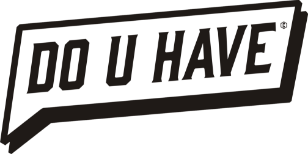Can you get scammed on Facebook Marketplace? You bet.
While Facebook Marketplace can be a great place to buy and sell used items, it’s not all rainbows and butterflies. Because Facebook Marketplace is a platform where buyers and sellers can directly connect with each other, there’s always the potential for scams. But that doesn’t mean you have to avoid the platform altogether.
To help you make the most out of Facebook Marketplace, let’s run through some of the most common scams you might encounter and a few tips on how to avoid them.
Scam #1: Bait and Switch
A bait and switch scam is when a seller lures buyers in by advertising an amazing deal on an item — only to switch things up once the buyer arrives. This can happen one of two ways. Either the item is no longer available, and it’s switched out for something else of lesser value. Or, the item is no longer available, and you’re offered a similar item at a much higher price.
Here are a few examples of how this might happen:
- Someone is selling a car. They may advertise it as a luxury vehicle with all the bells and whistles…but when the buyer shows up, they’re given the keys to a beat-up old clunker.
- Someone is selling an iPhone XS. But when the buyer shows up, they offer the buyer an iPhone X.
- Someone is selling a high-end blouse. But when the blouse arrives, it’s poorly made and looks like something you would find on Wish. (This is also referred to as a counterfeit scam.)
In any case, the goal of the scammer is to get money from the buyer without giving them what they were expecting to receive. And unfortunately, these types of scams are becoming more and more common on Facebook Marketplace as people look for deals on used goods.
How to Avoid Bait and Switch Scams
The best way to avoid being scammed in a bait and switch scheme is to pay close attention to the details in each listing. If an offer seems too good to be true, it probably is. When messaging sellers about their listings, be sure to ask specific questions about the condition of the item, any included accessories, etc. And don’t forget to ask for extra photos of the item that aren’t already posted.
Scam #2: Shipping Fraud
Shipping fraud is when someone offers to sell you an item on Facebook Marketplace, and then they ask you to pay for shipping. They may give you a fake tracking number, and the item will never arrive. In some cases, the scammer may even send you a completely different item than the one that was advertised. Shipping fraud is becoming increasingly more common on Facebook Marketplace, so it’s important to be aware of the signs so you can avoid it.
How to Avoid Shipping Fraud
There are a few things you can do to avoid being scammed on Facebook Marketplace. First, only deal with local sellers who are willing to meet in person. This way, you can inspect the item before giving them any money. If the seller insists on shipping the item, make sure to use a payment method that offers buyer protection, like PayPal. Finally, be sure to check the seller’s reviews before doing business with them. If they have mostly negative reviews or no reviews at all, it’s best to find someone else to buy from.
Scam #3: Fake Giveaways
We’ve all seen giveaways on social media, and in most cases, they are usually okay to get involved with (especially if it’s from a local business or notable brand). However, if you notice one of these giveaways as a post on Facebook Marketplace, it is probably a scam. The purpose of these scams is to get your information or to have you click on a malicious link. This can result in identity theft, spam, malware, or other not so pleasant consequences.
How to Avoid Fake Giveaways
Avoid participating in giveaways hosted on Facebook Marketplace. Giveaways can be a fun and sometimes rewarding venture for Facebookers, but you should only limit your involvement to brands and companies you know that are hosted directly on their page. Never willingly give away your personal information to a person, company, or profile you are not familiar with.
How to avoid getting scammed on Facebook Marketplace:
- Pay close attention to the item description. If something sounds too good to be true, it probably is. Be sure to read the item description carefully and look for any red flags. If the price of the item is significantly lower than similar items being sold elsewhere, that’s usually a cause for concern.
- Don’t buy from someone who doesn’t have a profile picture. A real person should have no problem showing their face on their profile. If they don’t have a profile picture, that’s a major red flag and you should move on to another seller.
- Insist on meeting in person to complete the transaction. If the seller doesn’t want to meet in person or makes excuses as to why you can’t meet in person, that’s usually a sign that they’re trying to scam you. You should only buy from someone if you’re able to meet them in person and inspect the item before handing over any money.
- Use your best judgment. If something feels off about the seller or the transaction, trust your gut and don’t do it. There are plenty of other sellers out there who are legitimate and honest, so there’s no need to take unnecessary risks.
Looking for a new way to buy and sell items? Check out Do U Have — a marketplace dedicated to ISO (in search of) and WTB (wanting to buy) communities.


